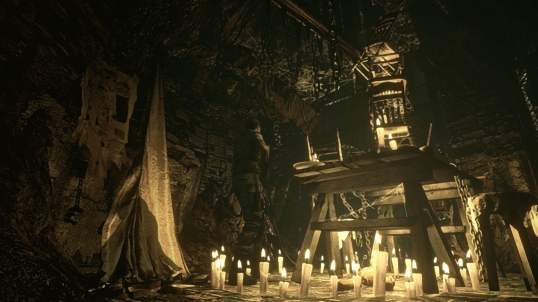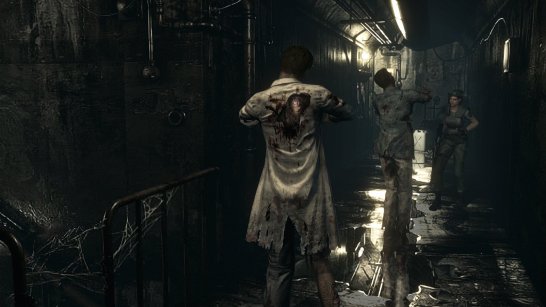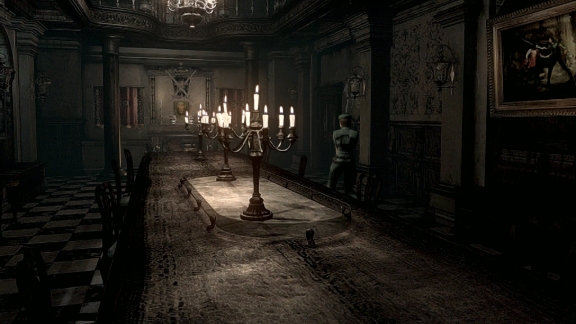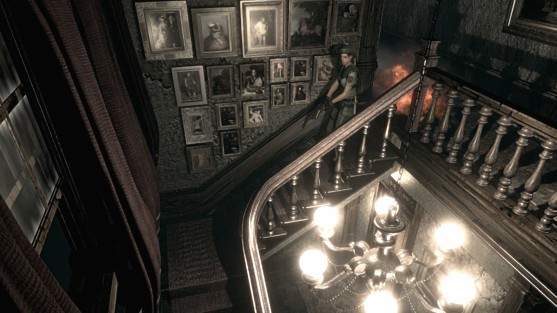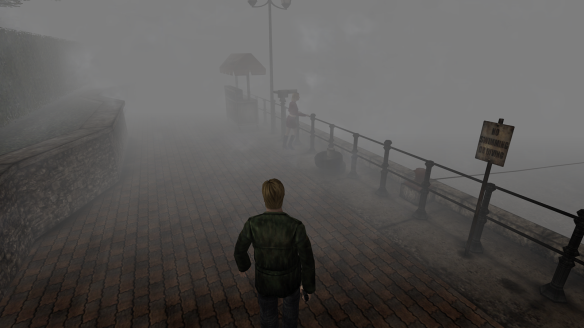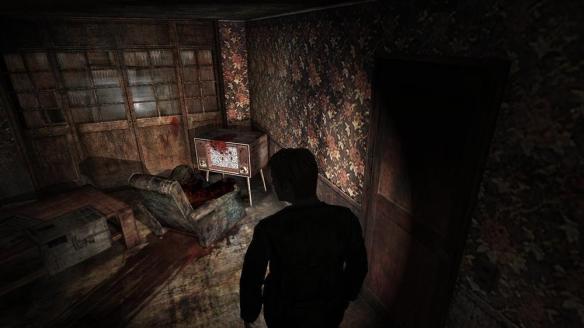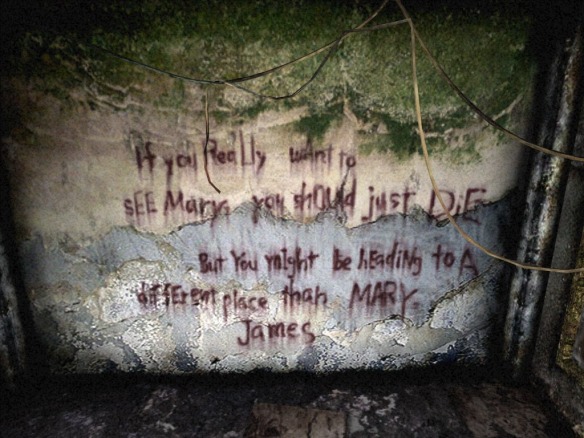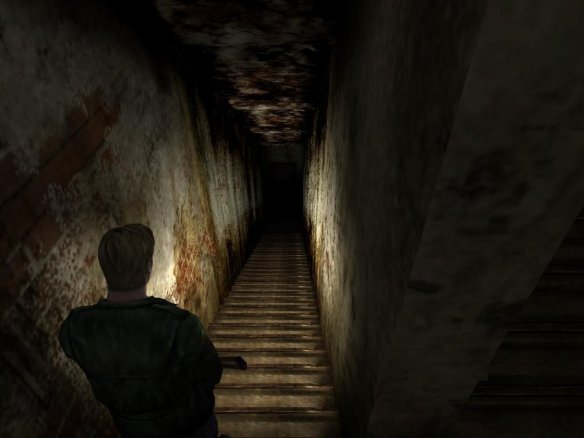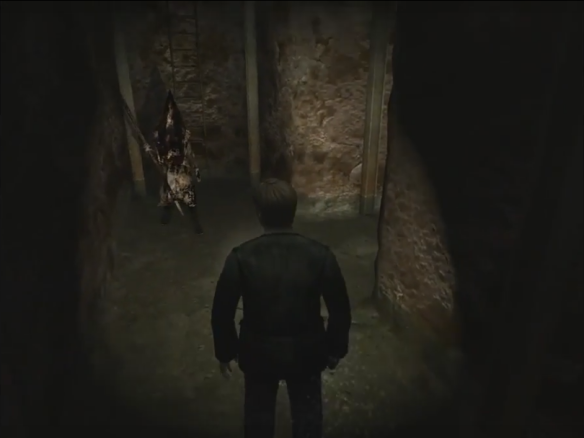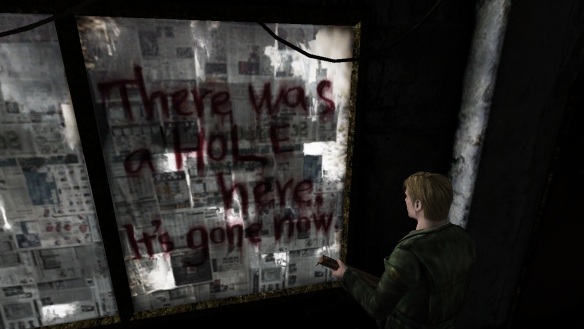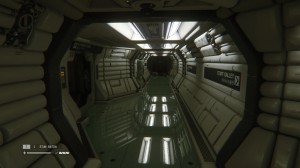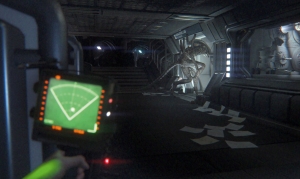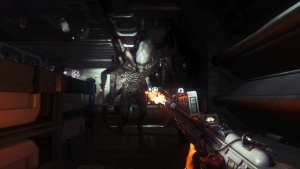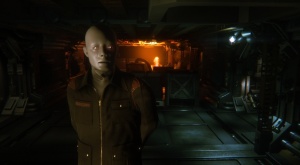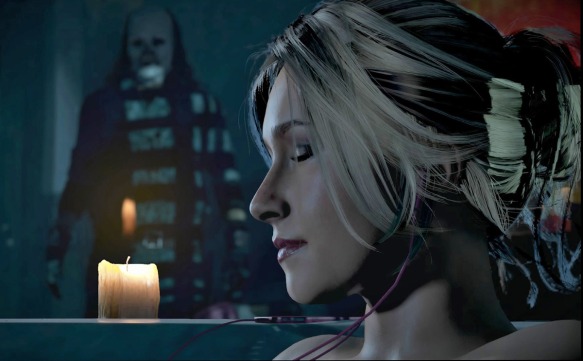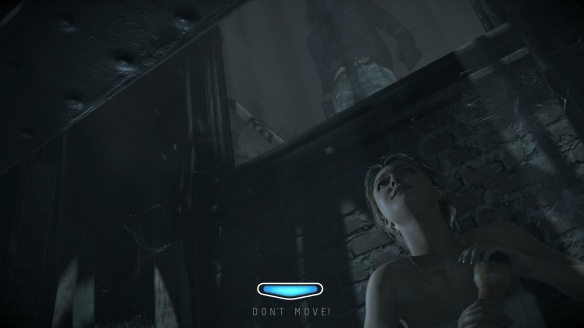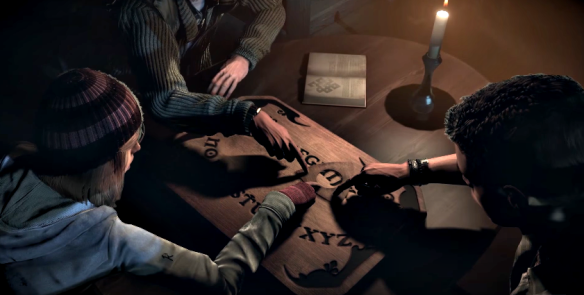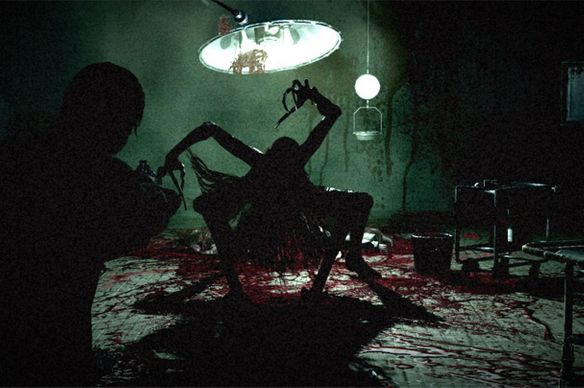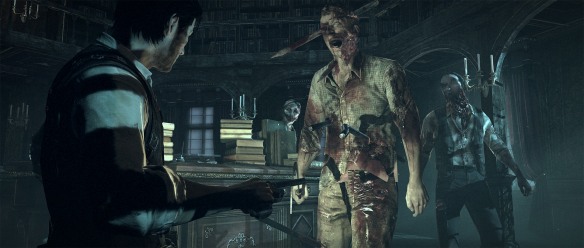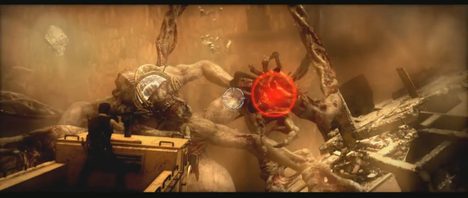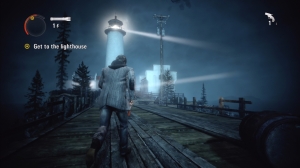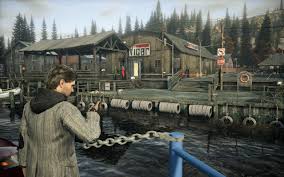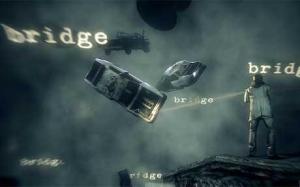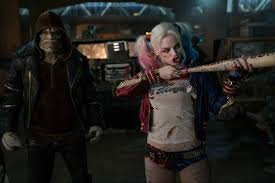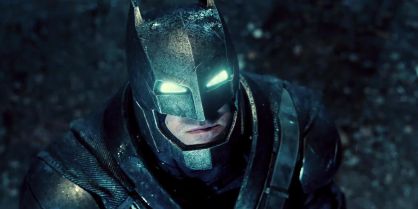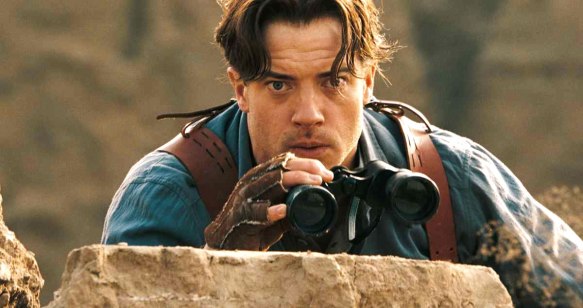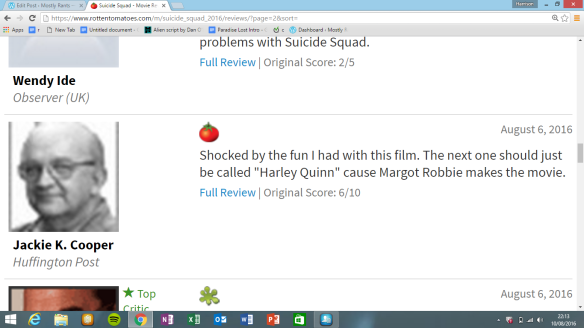A final (late) addition to Harrison’s horror game series, this time featuring not just one recommendation but several!
What’s that? You thought I was done? Oh you poor, sweet fools. I’m afraid that you can never escape from my pretentious pontificating. No, I still have so much that I’m simply dying to share with you. The horror genre is a vast enterprise, comprised of the some of the finest games of all time. To recommend only 7 would therefore be a disservice to an incredibly diverse and prestigious gaming tradition. So, even though it’s admittedly a little late, I thought I’d pool together a collection of honourable mentions for you to take a stabat (Assuming that, like me, you have no friends or social obligations to attend to on Halloween). Enjoy. If you dare.… That one didn’t really make any sense…Sorry.
Left 4 Dead
We’ll kick off the honourable mentions with something completely different; a first person shooter. Not only that, but a cooperative first person shooter of all things! Those two concepts should never blend well with horror, as a focus on constant gun fights inherently undermines any attempts at creepy tension building (see F.E.A.R for further reference). Meanwhile, a human controlled companion provides an unwanted sense of safety and comfort, one that is clearly detrimental to the required feeling of vulnerability and isolation that is integral to horror (see Resident Evil 6 for further reference). Indeed, for these reasons, Left 4 Dead is not a scary game in the slightest. It’s an action shooter through and through, albeit one with a horror wallpaper slapped over it. Still, if you and your friends are looking for a fun, fast paced, zombie-killing time, then you can’t get much better than this.
By heavily emphasising the cooperative nature of the gameplay, Left 4 Dead is effectively the perfect team-building tool. In each of the game’s survival scenarios, you will have to work together in order to prevail, be that by sharing supplies, rescuing each other from attacks, or by coordinating last stand defences. It makes for a very engaging multiplayer experience, one that refreshingly prioritises communication and strategy.
This unique dynamic can then lead to rather effective unscripted moments of drama. For instance, if one member of the group selfishly abandons everyone and sprints for safety during an attack, they may later find themselves ambushed by a horde of monsters with no one left to save them. There’s subsequently lots of potential for water-cooler anecdotes, and you’ll soon find yourself regaling people with stories of the time an incompetent teammate kept accidentally setting off a car alarms and alerting enemies to your presence.
That’s what works so well about Left 4 Dead, the way that you keep having fresh experiences every time you play. This is aided to no end by the A.I director, a system that procedural adjusts gameplay factors like ammo distribution, enemy placement and weather effects, in order to maximise the tension of any given campaign. All in all, Left 4 Dead might not be the scariest zombie game, but it is one of the most fun.
RATING: 9/10
Dino Crisis
I’ll be perfectly honest with you, I barely remember this forgotten 1999 title. I was only four when it came out, so the only recollection I have is of watching my father play it on the PSone. I remember a T-Rex smashing through a window and I remember constantly looking around for card keys. That’s about it. I also remember an abysmal sequel in 2003 (Dino Crisis 3) which was inexplicably set in space. Anyway, I digress, Dino Crisis has one hell of a central concept at its core. It is basically Resident Evil with dinosaurs. Seriously that’s it. It’s got the same mechanics, the same design mentality, the same awkward controls and even the same director. If that sounds like a criticism however, it’s not. Classic Resident Evil is a masterclass in video game design and it’s basically the perfect template for a horror game, so there’s accordingly no shame in reusing the style in a new context. And when that new context is an intense, gory, dinosaur themed horror game, then I’m all on-board. It just works. At least, that’s how I remember it.
RATING: I don’t remember/ 10
Silent Hill 3
Whilst Silent Hill 2 stands head and shoulders above… well every other horror game ever, that doesn’t mean that we should overlook everything else that the series has to offer. After all, with a likeable protagonist, refined combat, and an abundance of imagination, Silent Hill 3 is yet another instalment in the legendary franchise that warrants classic status.
This time you take control of Heather Mason, a hot-headed teenager who one day discovers that she is being hunted by a cult that worship evil Lovecraftian gods. What I like about this game in particular, is that it refuses to simply rehash the 2nd game, something which later became the go-to-state for a Silent Hill sequel. Storywise it’s totally different; Heather has no hidden guilty past, she isn’t being punished for anything, and the reason that she is being pursued is because the villains believe that she can birth a supernatural deity. Secondly, the game isn’t even set in Silent Hill for the most part, which means that we get an entirely different creepy aesthetic and surrealist atmosphere, but one that crucially still feels in keeping with the rest of the franchise.
The scares on offer are also quite different, with an emphasis on body horror and pregnancy related imagery. For this reason, all of the creatures and puzzles are unified by the theme of child birth and conception, which makes for a nice change when compared to the generic enemies that you’ll encounter in most horror games. The title also features one of my favourite bits from the whole series, in which you visit a demonic amusement park that’s overrun with monsters. That section in particular allows for the creative minds at Team Silent to run wild with their demented imaginations, leading to all kinds of terrifically memorable moments (special mention must go to a visit to a certain haunted house ride). It also features gaming’s most sophisticated jump scare too.
RATING: 8/10
Dead Space
This particular entry was originally published at The Edge SUSU on October 31st 2014.
Before the sequels arrived to actionize the hell out of this series (with mixed results), there was the slower paced, dread filled franchise starter that nicely filled the void left behind after Resident Evil started to lose some of its mojo. Taking control of engineer Isaac Clarke, players battle their way through the stranded Ishimura starship, fighting off the monstrous nercromorphs; terrifying creatures that are a mix of Giger’s Xenomorphs and John Carpenter’s The Thing.
With a level of difficulty seldom seen in modern games and a scarcity of resources, Dead Space makes the player feel how all good survival-horror games should: powerless. The ingenious mechanic that dictates that your enemies  can only be killed by the strategic dismemberment of their limbs also forces more trigger happy gamers into being conservative with their ammo, so that there’s a real tension to every encounter.
can only be killed by the strategic dismemberment of their limbs also forces more trigger happy gamers into being conservative with their ammo, so that there’s a real tension to every encounter.
Several of the scripted scares are orchestrated with distinct panache (that bloody ending) but where Dead Space really excels is in its atmosphere. Deservedly winning several awards for its lighting and sound design, the game expertly inflects every crevice of the stunningly realized environment with a genuine sense of threat and the unknown. Rarely has sound been so pivotal to a gaming experience, but here it really does make all the difference. Keeping you constantly on guard, the various indecipherable noises never allow you to feel truly safe and even when you venture into the oxygen free expanses of space, the eerie silences take on their own unnerving menace.
RATING: 8/10
Resident Evil Sequels
If you’ve already played through the first game in this landmark series but are still hungry for more, then worry not, there’s still a whole back-catalogue of hits to plough through. Each game has something unique to recommend, from Zero’s inventive gameplay style that has you simultaneously control two characters, to 3’s groundbreaking use of the relentless stalker boss; Nemesis. Whilst Resident Evil 4 is undoubtedly the franchise’s high point, its action-oriented bent makes it a harder sell for Halloween. Therefore, my pick for the best horror resi game has to go to the seminal Resident Evil 2.
Relocating the action from the Spencer Mansion to the nearby town of Raccoon City, this sequel ups the ante in every department, without sacrificing the restraint and attention to detail that made the first game so hugely successful. With a larger map, even smarter puzzles, more varied scares, better combat, and the same signature level design as before, this is a truly magnificent follow up that improves upon its predecessor in almost every respect. It also has the distinction of including one of my favourite gaming creatures of all time, the hideous Lickers.
RATINGS
Resident Evil 0: 7/10
Resident Evil 2: 9/10
Resident Evil 3: 8/10
Resident Evil 4: 10/10
Resident Evil 5: 8/10
Resident Evil 6: 3/10
Grabbed by the Ghoulies
Apparently this endlessly quirky and quaintly charming adventure game garnered a relatively mixed reception upon its debut, which is something of a shame. It might not be a classic, but it holds a special place in my own heart, albeit largely for nostalgic reasons.
In this underrated children’s title, you control Cooper, a young boy who ends up at a creepy mansion after taking a wrong turn during his travels. When his girlfriend is kidnapped by the nefarious Baron Von Ghoul, Cooper makes it his mission to get her back by any means necessary. This largely entails exploring the spooky residence and battling all kinds of colourful and cartoonish creatures, from staple monsters like Vampires, Mummies and Skeletons, to more oddball creations like possessed household appliances, ninja imps, and vampire chickens.
Gameplay consists of simple beat-em-up mechanics that allow you to use almost any item in a given area, like chairs, fire extinguishers and even billiard tables. Each room is basically a mini-level, designed to be completed in about 1-2 minute(s). The catch however, is that there will be a specific challenge or rule enforced upon every encounter. For example, you might have to complete a room in under a certain time limit, or without breaking any nearby items. Should you fail to meet the imposed criteria, then the Grim Reaper will appear and pursue you relentlessly throughout the rest of level. The Reaper is an especially intimidating foe, as he cannot be killed, yet can mercilessly defeat you with a single touch. Of course, it’s not impossible to clear a stage with the Reaper on your tail, but it is difficult, so you’ll want to avoid failing his tests as much as you can. This strange little mechanic makes for a really innovative gameplay experience, one that still feels fresh and unique thirteen years later.
Overall, Grabbed by the Ghoulies is a charismatic gem that has been unfairly forgotten by the history books. With a lovable art style, classically spooky score and energetic visual comedy, it’s the perfect game to accompany a more family-friendly Halloween celebration. After all, it’s basically Resident Evil retold in the style of Scooby Doo.
RATING: 7/10
P.T
Okay, this one technically isn’t a full game, but I had to overlook that technicality as I simply couldn’t ignore this chilling mini-masterpiece. After all, P.T is potentially the scariest thing to happen to gaming since Silent Hill 2. For those among you who are unaware, P.T stands for ‘Playable Teaser’. The reason for this, is that the game was intended to function as an atmospheric taste of what gamers could expect from Guillermo Del Toro and Hideo Kojima’s ill-fated Silent Hills. Now however, it’s all that remains of the tragically cancelled project. The silver lining in this cloud, is that it consequently works as a standalone title that can be appreciated in its own right, one that you absolutely need to check out.
The ingenious premise is deceptively simple. There’s no combat. There’s no hiding. All that you do is walk around in a circle repeatedly. That’s it. In this teaser, you play as an unidentified man who finds himself caught in a Groundhog Day style time loop. Forced to walk in an endless cycle around a suburban house, you gradually start to notice that things are changing each time you pass through. At first it’s just little details; a door might open a crack, some new sounds might be heard, or cryptic writing might appear on the wall. But as it goes on, things get exponentially creepier, and you’ll soon find yourself dealing with a ghost, a talking paper bag and an undead fetus in a sink. No I did not make any of that up by the way.
The location is totally restricted to a single L-Shaped corridor (and a bathroom), so in terms of level design this is as minimalist as they come. And yet, the developers constantly find new ways to make the repeating location feel engaging, be it by introducing new clues and threats, or simply by changing the lighting. This claustrophobic setting has a profound effect on the game, as it it creates an unbearable sense of unease. Because the location is so small, you know that you’re never more than a few feet away from the next horrific occurrence. You’re never remotely safe. Much like in Silent Hill 2, you get the feeling that you’re literally playing through someone’s nightmare. And for whatever reason that really seems to appeal to me.
Speaking of nightmares, this game gave me a couple of my own, mostly thanks to Lisa. Never before has a video game antagonist effected me to the point where I was afraid to sleep at night. You see, I normally can’t be scared of gaming characters outside of the virtual words that they inhabit, because I’m all too aware that they’re just pixels on a screen. Lisa is different however. She lingered with me until long after I finished P.T.
A pregnant woman who was murdered by her husband, Lisa’s spirit shows up throughout the game at unexpected intervals, purely to scare the crap out of the player. Her uncanny movements, permanent smile and missing eye may give her a horrific appearance, but it’s her unpredictable behavior that really unnerves you. You never know when she could be waiting right behind you, or when she might be watching. The only warning you ever get is the radio’s instructions to ‘look behind you’ (a course of action I wouldn’t recommend) and her signature sobbing. The fact that these hysterical cries are indistinguishable from her insane fits of laughter is perhaps the scariest thing of all however. I really can’t stand her. I mean that as a compliment by the way, she was a properly terrifying creation.
Unfortunately, I can’t recommend that you play P.T if you haven’t already, as Konami have since removed it from the PlayStation store. I can therefore only suggest that you look up a commentary-free playthrough on YouTube. It won’t be the same, but it’s better than nothing I suppose. Just be prepared to sleep with the light on.
RATING: 9/10
Okay that’s it. Shows over folks. I got nothing else to give you. I can only apologise to those people who have been waiting for their favourite games to be name-checked, only to be disappointed in the long run. Yes I am more than aware of Amnesia, Condemned, Eternal Darkness and Fatal Frame, but frankly it’s my list and if for some reason you’re upset by any perceived omission, then please don’t get pissy about it. God knows those games are all bound to crop up in other lists elsewhere (even if Condemned is grossly overrated).
Anyway, thanks for sticking with me through all this. It means a lot. Now I just need a spooky pun to sign off with…. Erm… It’s been a real…. Scream! ….That’ll do. I don’t know how the Crypt Keeper comes up with this shit on a regular basis.
